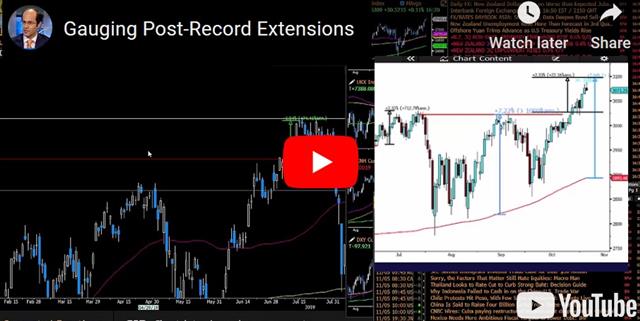China Funds Thru Euros
China borrowed in euros for the first time in 15 years on Tuesday as President Xi signaled increasing cooperation with France. The euro lagged on the day while the Australian dollar led the way. Odds of an RBNZ rate cut next week rose after a small miss in jobs numbers. Speeches today from Fed officials include Chicago Fed's Evans, New York Fed's Williams and Philadelphia Fed's Harker. EIA oil inventories are later in the afternoon. Where is the next high for stock indices? If you're still short and partly hedging them, at which point would you close the longs? All this in the detailed Premium video below.
China sold euro-denominated bonds for the first time since 2004 in a quiet move that is highly significant and telling. The sale was only for four billion dollars of 7, 12 and 20-year bonds but there was extremely high demand, around 20 billion euros worth. With that, the bonds priced about 20 basis points below China's initial target, according to a report.
The move is the culmination of a handful of factors. For FX traders, the big one is that the euro is increasingly the preferred funding currency. Rates are as low as Japan but without the same levels of indebtedness and without the risk of a single government.
It also signals the increasing cooperation of China and Europe. Macron and Xi met on Wednesday and the Chinese President touted multilateralism and pushing relations to a new level. Italy has embraced the belt-and-road initiative.
Finally, it signals China's efforts to diversify its FX and economic exposure away from the US. While it underscores the decoupling theme, it also highlights the battle for Europe and the old institutions like the WTO.
With this demand and the near-certainty that eurozone rates will remain pinned to the floor, expect more countries and corporates to issue euro-denominated debt and promptly invest it elsewhere. That will keep the downward pressure on the euro, but could also give it further positive potential during risk-off phases.
Early in Asia-Pacific trading, New Zealand Q3 unemployment rose to 4.2% compared with 4.1% expected. Average hourly earnings rose 0.6% compared to 1.0% y/y expected. That miss pushed the odds of an RBNZ rate cut next week to 60% from 54% and mildly weighed on the kiwi.
Latest IMTs
-
Silver's Signal to Gold Full Explanation
by Ashraf Laidi | Dec 30, 2025 20:04
-
Gold Silver Next الذهب و الفضة
by Ashraf Laidi | Dec 26, 2025 17:15
-
Everyone's Talking about this Risk
by Ashraf Laidi | Dec 24, 2025 14:08
-
2026 Difficult but not Impossible
by Ashraf Laidi | Dec 22, 2025 20:06
-
Bank of Japan Massacre or Yawn?
by Ashraf Laidi | Dec 18, 2025 20:50








